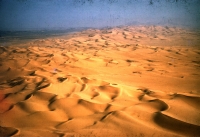
Al-Jafurah Desert (romanized: A l-Jāfūrah ) is a sand dune area located in the southern part of a sandy terrain that extends from the border of the Kingdom of Saudi Arabia with the State of Kuwait in the north to meet the sands of Al-Rub' Al-Khali ( Empty Quarter ) in the south, and between the coast of the Arabian Gulf in the east and Al-Suman Plateau in the west. Al-Jafurah Desert is closely linked to Saudi national history, as it was one of the key stops in the journey of the Foundi...
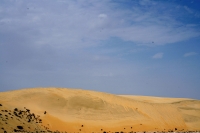
Al-Kirsu Area is part of al-Rub' al-Khali(Empty Quarter ) Desert, located southeast of the Kingdom of Saudi Arabia. It is known for its ancient water resources and is considered one of the grazing areas within al-Rub' al-Khali. Location of al-Kirsu Area Al-Kirsu is surrounded by various sandy regions, each with distinct names. To the north lie al-Mihrad and al-Mahakik, to the south are Khillat al-Ajma' and al-Bouh, to the east lies al-Hibak, and to the west is al-Munjar. The elev...
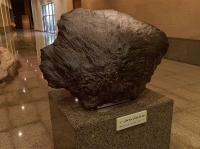
The Wabar Meteorite is a celestial object that fell to Earth, creating craters in the Al-Rub' al-Khali ( Empty Quarter ) Desert in the Kingdom of Saudi Arabia. It was discovered by the English explorer Abdullah Philby in 1932. The meteorite was later moved to the National Museum in Riyadh. Studies estimate its fall to have occurred more than four hundred years ago, and it weighs approximately 3.5 t. Al-Rub' al-Khali (Empty Quarter) Desert includes several geological sites, such as al-...
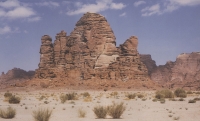
Al-Hammad Plateau is located east and north of Harrat al-Harrah in al-Jawf Province , north of the Kingdom of Saudi Arabia . It is a flat-surfaced plateau with few major valleys, as most of its valleys are tributaries ending in local basins. The plateau's elevation ranges between eight hundred and 850 m, except for Mount Umm Aw’al, which reaches 1,014 m, and Mount Wa’ilah at 936 m, located northeast of Turayf. Boundaries of al-Hammad Plateau Longitude 40° 30' E serves as the divi...
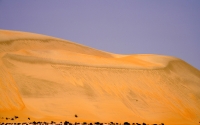
As-Sanam Area is one of the sandy regions located at the northern edges of al-Rub' al-Khali ( Empty Quarter ) in the Kingdom of Saudi Arabia . Most of it consists of semi-flat sand sheets, and it was named 'as-Sanam' (literally translates as camel hump) due to the undulating sand sheets that resemble the humps of camels in appearance. Various small ergs (Uruq) and sand sheets spread throughout as-Sanam Area, where sand corridors, small dunes, sand hills, and elevated sand landmar...
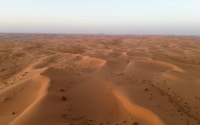
Al-Nufud al-Kabir Desert covers an area of 65,000 km². It is the second-largest desert in the Kingdom of Saudi Arabia by area. It accounts for 10.2 percent of the total sand accumulation areas in the Kingdom. It spans across three administrative provinces: Hail , al-Jawf , and Tabuk . Its red color indicates the presence of iron oxide. It also shows that the desert and its sandstone outcrops were subject to erosion over the years. The desert is known for its strong winds and its widespread cre...
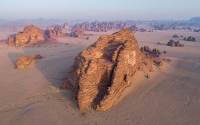
Hisma Plateau is situated northwest of the Kingdom of Saudi Arabia, stretching from the outskirts of Jabal Midian in the west to the edges of Harrat al-Harrah in the east. It also extends into the Jordanian territory in the north. The plateau's elevation ranges between eight hundred and 1,700 m above sea level, slightly increasing towards the center of the plateau, east of Tabuk City in al-Tubayq Province. However, its surface recedes near Tabuk City, forming an inland depression pouring i...
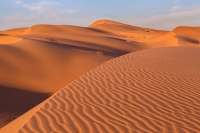
Yes, as they are part of the Kingdom of Saudi Arabia, which has advanced in ranking over the five permanent members of the United Nations Security Council and secured first place among G20 countries in the security index according to the Global Competitiveness Report 2019 and the Sustainable Development Report 2020. Most of the deserts in the Kingdom are connected to populated areas and are not considered remote, except for ar-Rub' al-Khali (Empty Quarter) desert located in the east and so...
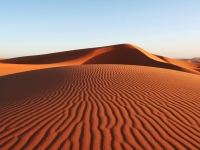
Ad-Dahna' Desert sand contains iron oxide, which gives it its red color. These sandy formations stretch from the Northern Border Province, extending downward to Hail Province , then to Qassim and Riyadh , finally reaching the Eastern Province . Ad-Dahna' Desert spans over 45,000 km 2 , representing 7.1 percent of the total sand accumulations in the Kingdom of Saudi Arabia. The highest elevation of dunes in ad-Dahna' Desert above sea level is 779 m, located in Ramlat al-Ashyakh, e...
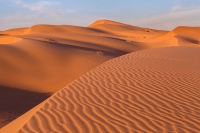
Ar-Rub' al-Khali (the Empty Quarter) Desert derives its name from its sparse population and minimal presence of animal and plant life because of its surrounding environmental conditions and circumstances. As the largest continuous sand desert in the Kingdom of Saudi Arabia, it spans an estimated 430,000 km² within the Kingdom, accounting for 67.7 percent of the Kingdom's total sandy expanses. It is situated in the southeastern part of the Kingdom. Ar-Rub' al-Khali Desert is loca...
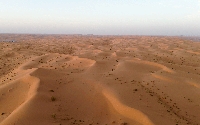
The sand covers about 635,000 km 2 , i.e. 33 percent of the Kingdom of Saudi Arabia's 2 million km 2 . Most of the sand clusters are concentrated in the Arabian Plate, in the east and southeast of Saudi Arabia. Deserts have other local names, such as: Batra', Ti'is, Qawz and 'Irq. Ar-Rub' al-Khali (Empty Quarter) Desert It is the largest connected sand cluster in the world, extending across four Arab countries: Saudi Arabia, UAE, Oman, and Yemen. It stretches around430,...
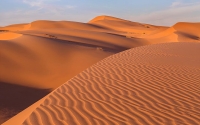
Ar-Rub' al-Khali (Empty Quarter) Desert is the largest dune in the Kingdom of Saudi Arabia. It covers about 430 thousand km 2 within the borders of Saudi Arabia, which is 22 percent of the nation's total area. It is situated within three provinces: Eastern Province, Najran, and Riyadh. Two main components are behind the formation of sand dunes in Saudi Arabia: continental sands from the Arabian-Nubian Shield, and marine sands from the Arabian Gulf. Sand dunes further grew and expanded...